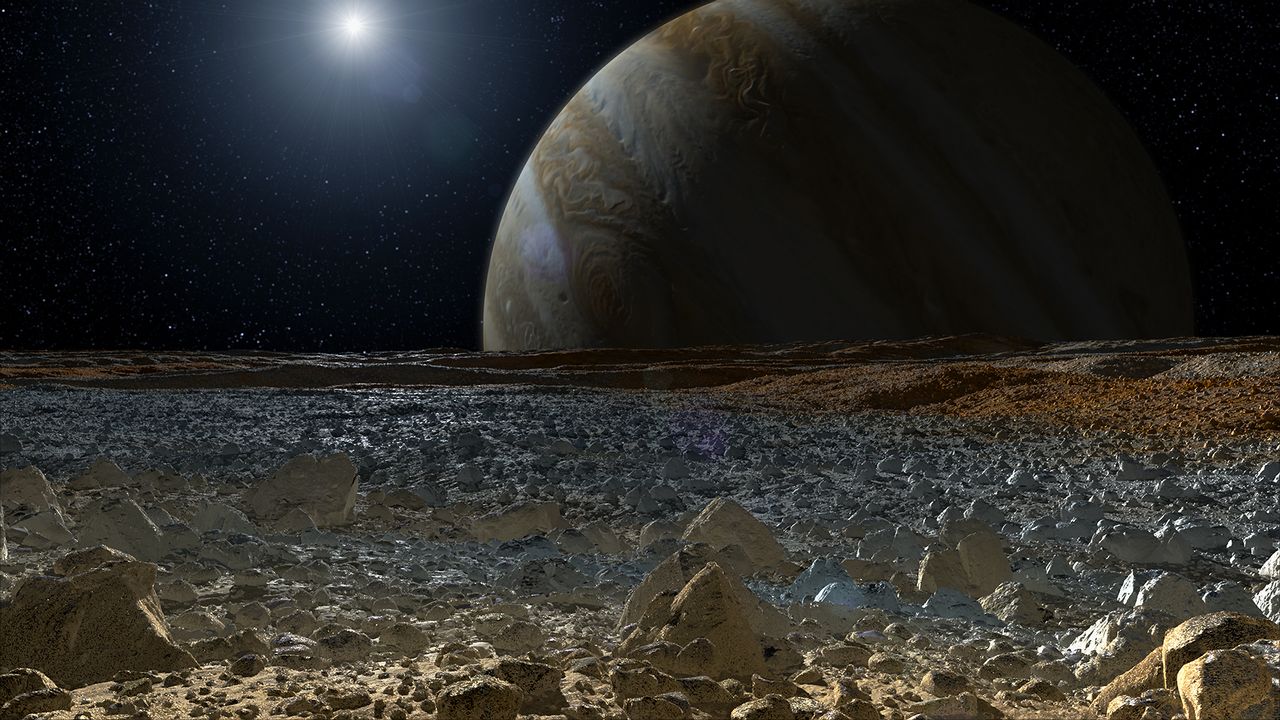New Findings from JWST Reveal Dynamic Chemistry of Europa

Recent observations from the James Webb Space Telescope (JWST) have transformed our understanding of Jupiter’s moon Europa, revealing it to be a more dynamic environment than previously imagined. Scientists have long viewed Europa’s icy surface as a static shell, but new data indicates that it is, in fact, a world of ongoing geological activity.
The research, led by Richard Cartwright, a spectroscopist at Johns Hopkins University, suggests that the surface of Europa is not only porous but also warm enough in specific areas to facilitate the rapid recrystallization of ice. This revelation raises intriguing questions about the moon’s subsurface ocean, which plays a crucial role in its potential habitability.
Discovering Chaos Terrains
The study focused on two significant regions in Europa’s southern hemisphere: Tara Regio and Powys Regio. These areas are characterized by “chaos terrains,” where blocks of ice appear to have broken off, drifted, and refrozen. Such regions are particularly valuable for understanding the moon’s interior, as they reflect the cycling of materials between the surface and the subsurface ocean.
Cartwright noted, “We think that the surface is fairly porous and warm enough in some areas to allow the ice to recrystallize rapidly.” By utilizing JWST’s capabilities, researchers detected crystalline ice both on the surface and at deeper levels, challenging previous assumptions about ice distribution on Europa.
The findings, published on May 28, 2023 in The Planetary Science Journal, highlight how measuring the spectral properties of these chaotic regions can provide insights into Europa’s chemistry. The data suggests that the ice composition is likely sourced from a subsurface ocean nearly 20 miles (30 kilometers) beneath the icy crust.
Uncovering Hidden Chemistry
Further analysis revealed intriguing chemical signatures. Ujjwal Raut, a program manager at the Southwest Research Institute and co-author of the study, emphasized the implications of these findings: “Our data showed strong indications that what we are seeing must be sourced from the interior.” This includes the presence of sodium chloride, akin to table salt, and significant evidence for carbon dioxide and hydrogen peroxide.
To understand how ice behaves on Europa, Raut and his team conducted laboratory experiments simulating the extreme conditions of the moon’s surface, which is constantly bombarded by charged particles. Unlike Earth, where ice forms in a hexagonal structure, the radiation on Europa creates amorphous ice, a disordered form that complicates the moon’s surface dynamics.
The JWST’s NIRSpec instrument has proven exceptionally capable in this research. It can detect important chemical signatures across a wide range of infrared wavelengths, allowing scientists to create detailed maps of material distribution on Europa’s surface. The team found higher concentrations of carbon dioxide in the chaotic regions compared to surrounding areas, suggesting that these deposits likely originate from the subsurface ocean rather than external sources, such as meteorites.
Evidence also points to recent geological activity, as carbon dioxide is unstable under Europa’s harsh radiation, indicating that the surface processes are ongoing. Raut stated, “The evidence for a liquid ocean underneath Europa’s icy shell is mounting, which makes this so exciting as we continue to learn more.”
As the search for life continues, these findings align with the goals of NASA’s upcoming Europa Clipper mission, which is on track to reach Europa in April 2030. The spacecraft will conduct multiple flybys to gather essential data about the moon’s hidden ocean and its potential for hosting life.
The revelations from the JWST not only enhance our understanding of Europa but also open new avenues for exploration and inquiry into the potential habitability of icy worlds beyond Earth.






